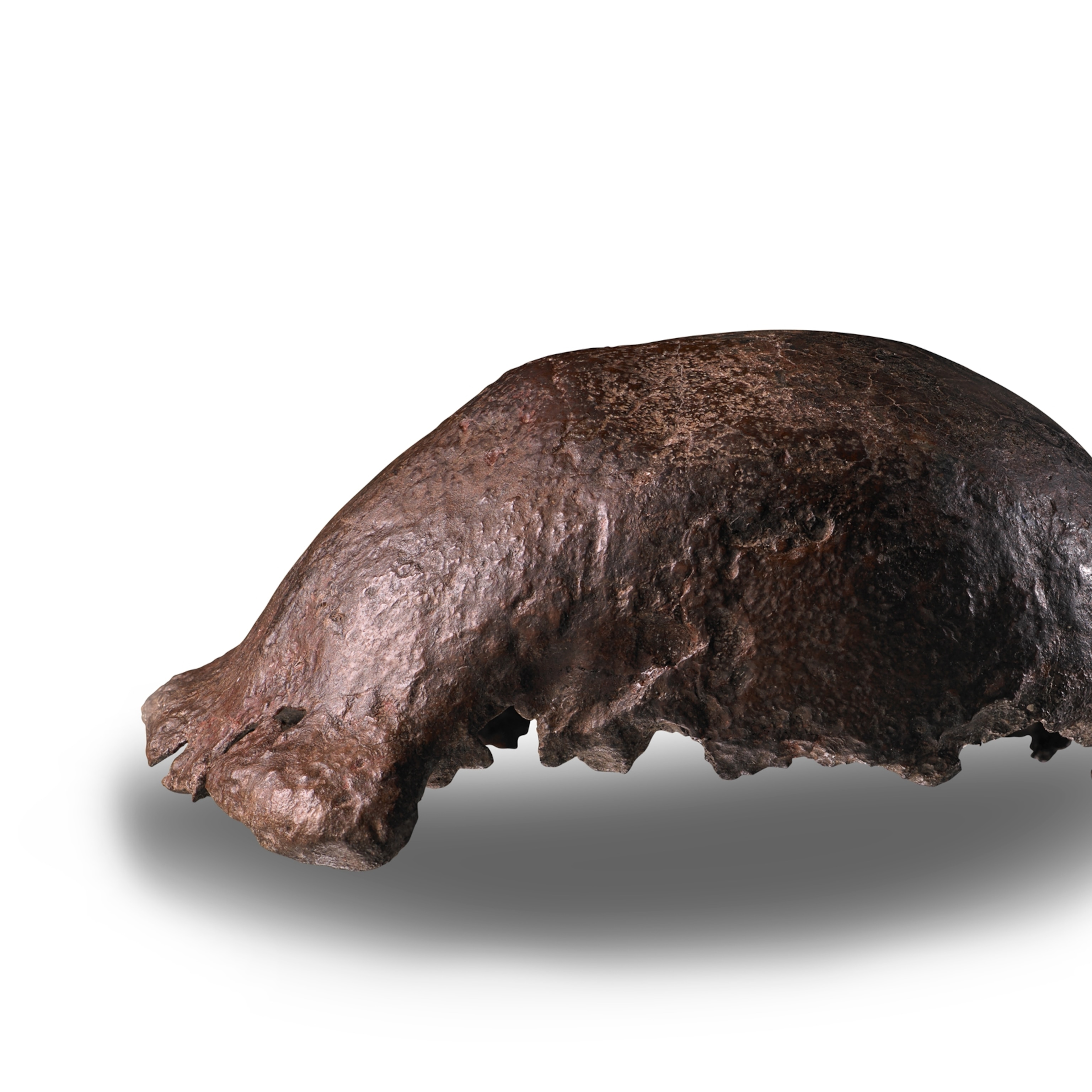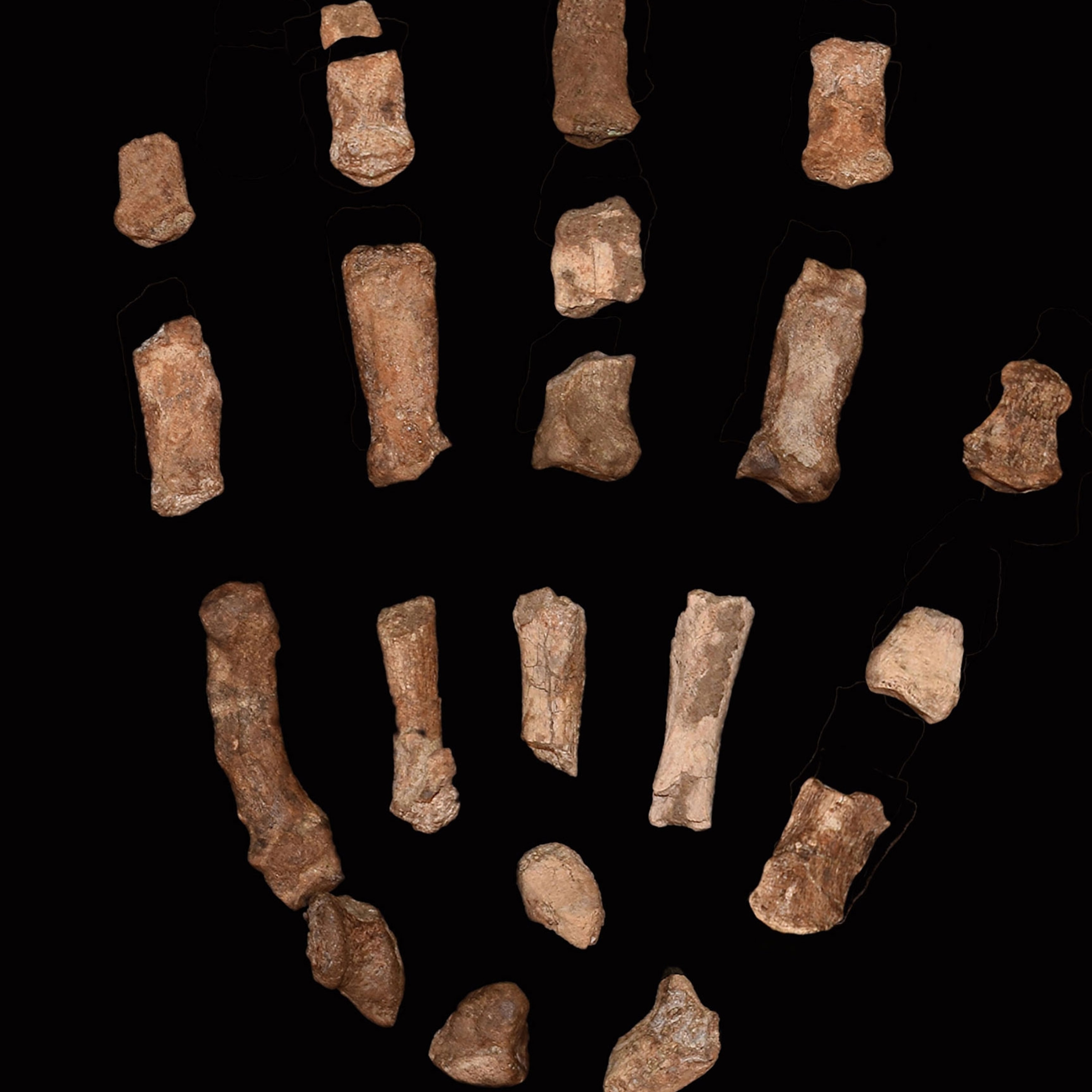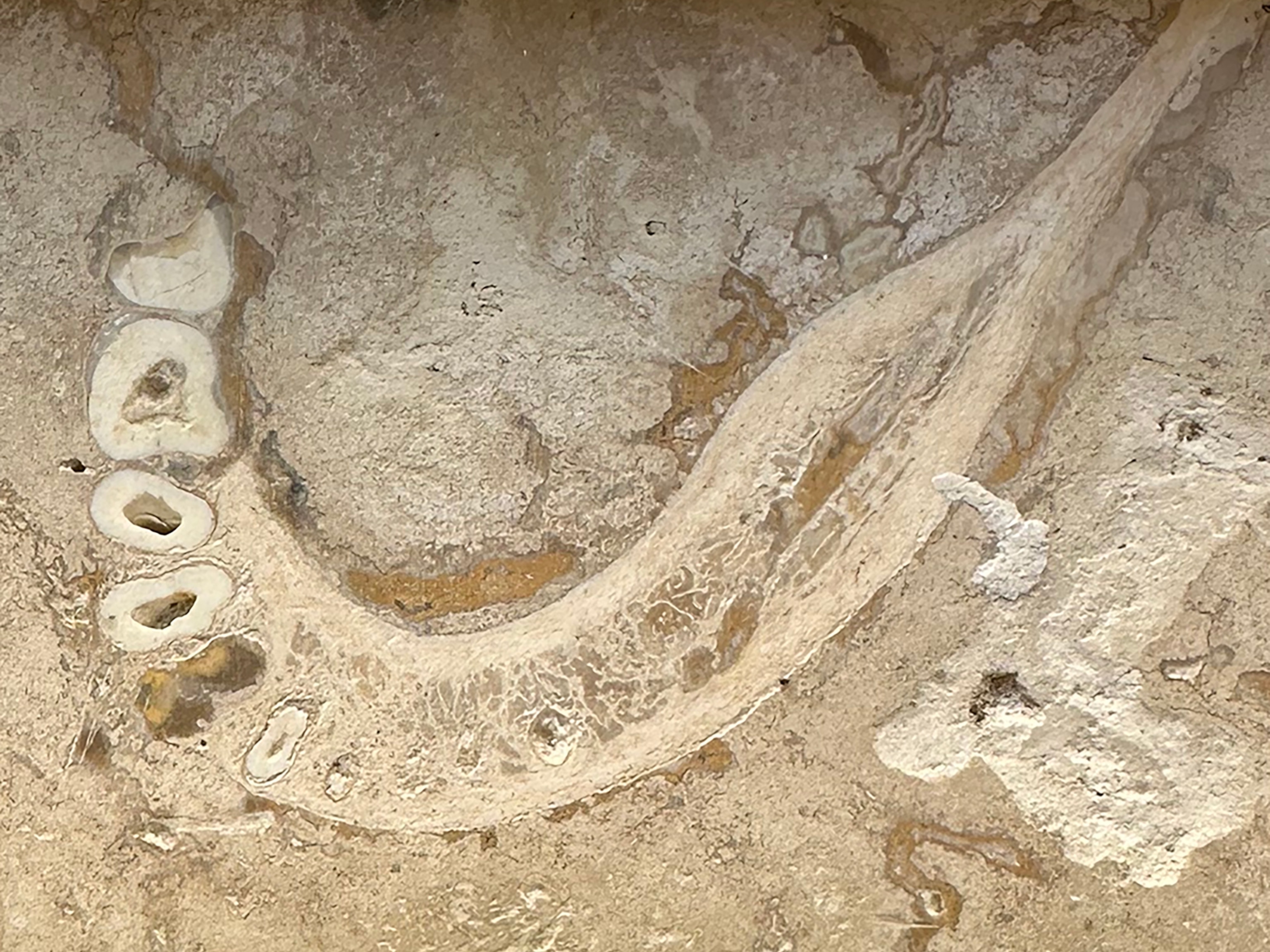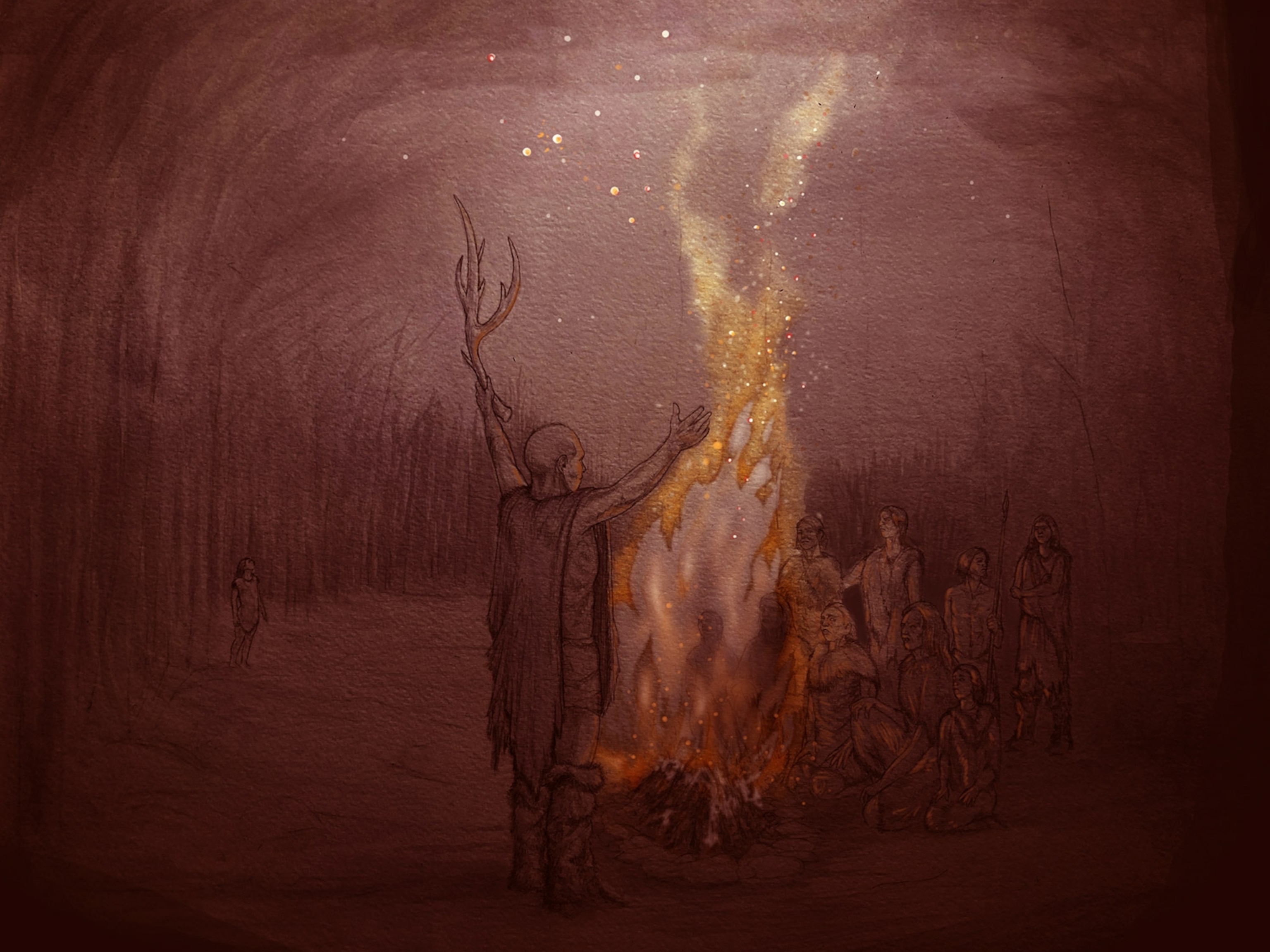
Newfound Footprints Stir Debate Over Our Ancestors’ Sex Lives
Australopithecus afarensis could have had a gorilla-like social structure, according to a provocative study of 3.6-million-year-old prints.
Adding to an electrifying discovery made almost 40 years ago, researchers have uncovered a new set of footprints made by an early human ancestor that roamed Africa more than 3.6 million years ago.
Found in Laetoli, a renowned archaeological site in northeastern Tanzania, the 14 newfound footprints add to a set of 70 tracks uncovered in 1978 by paleontologist Mary Leakey. In all, the tracks are the oldest prints of their kind ever found, providing crucial evidence that walking on two legs was picked up early in the human lineage.
Spread out over an area three times bigger than an average parking space, the prints most likely belong to two individuals of Australopithecus afarensis, the hominin species most famously represented by the fossil known as “Lucy.” (Read more about how Lucy might have died.)
The footprints are among the many cultural treasures found in Tanzania, a country rich in ancient paleontological sites. Olduvai Gorge, some 20 miles to the northeast of Laetoli, famously harbored some of the earliest known human fossils.
Celebrating that heritage was the only reason the new prints were found at all: In 2015, Tanzanian archaeologists Fidelis Masao and Elgidius Ichumbaki, both of the University of Dar es Salaam, found the new footprints while evaluating the potential impacts of building a museum on the Laetoli site.
The pair then welcomed a team of Italian scientists to the site for further excavations. Tanzania’s government publicly unveiled the footprints in July 2016, with the country’s tourism minister serving as the guest of honor.
“When I was in Laetoli, I could not believe it,” says Marco Cherin, a paleoanthropologist at Italy’s University of Perugia and a study co-author. “Fossils are completely different from an emotional point of view—you see the track of the passage of someone. You can read the behavior.”
Not a Walk in the Park
Paleoanthropologists are welcoming news of the latest set of footprints with open arms.
“I’m really excited about the fact that more footprints have been found at Laetoli,” says Briana Pobiner of the Smithsonian Institution’s Human Origins Program, who wasn’t involved with the study. “It’s the oldest footprint site in human evolutionary history.”
What’s more, one of the two newfound individuals’ large strides suggest that he was more than 5.5 feet tall, making him one of the largest A. afarensis individuals yet identified. The find helps to bolster the argument that A. afarensis males and females had different body types, a trait called sexual dimorphism.
“It’s not new in the sense of ‘A-ha!’” Pobiner says. “But it is interesting that one of the individuals does seem to be a larger male than had been represented in the Laetoli sample.”
However, deeper analysis of the newfound prints, published on December 14 in eLife, is somewhat controversial, in large part because of how the researchers are interpreting them.
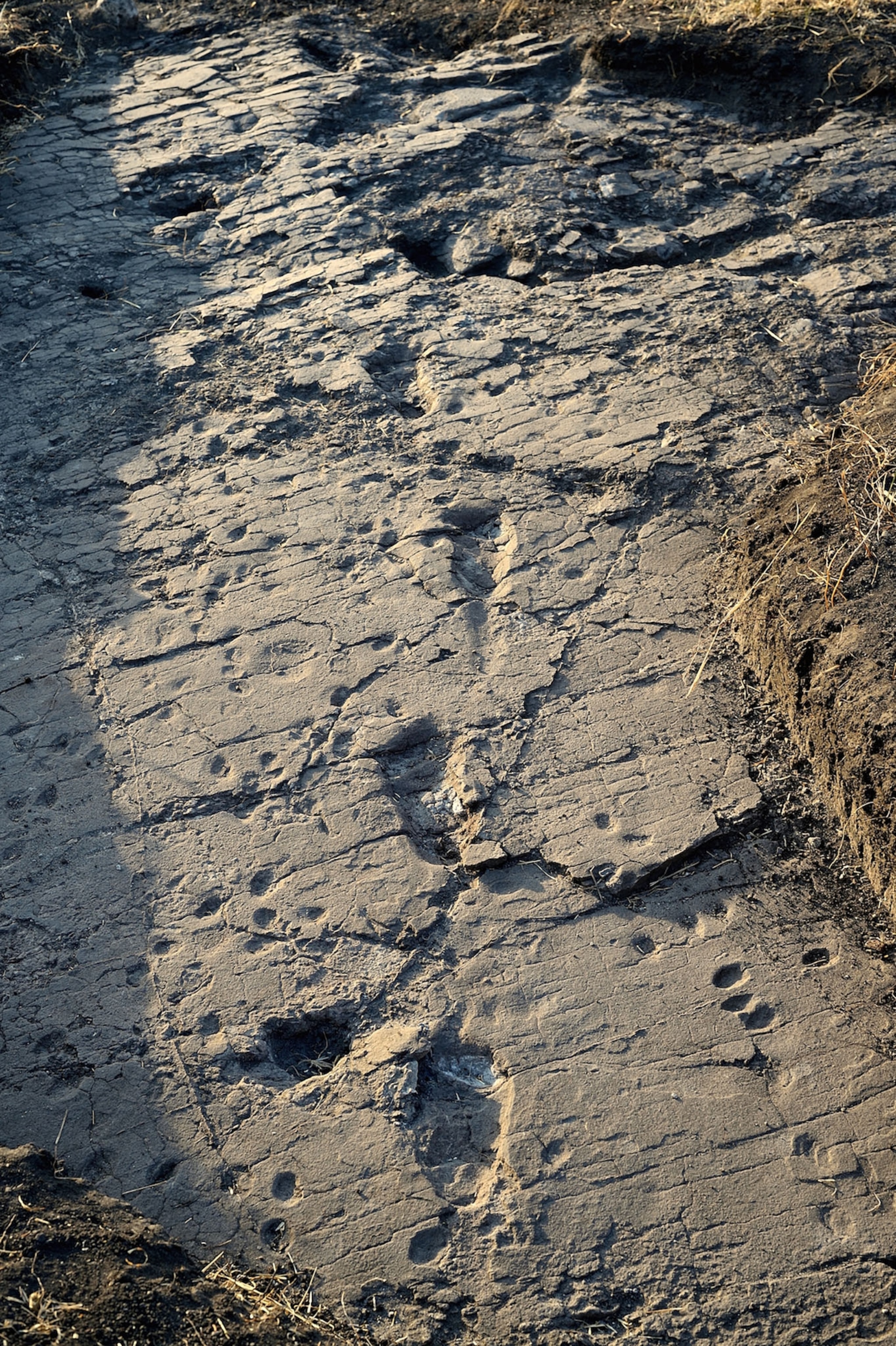
Cherin and his colleagues note that newfound footprints are in the same ash layer and orientation as the tracks found in 1978, suggesting both print sets are from the same group traveling across the landscape. According to Cherin, the newfound tracks were likely made within hours of the previously discovered prints.
You May Also Like
The researchers argue that the footprints upend our understanding of the Laetoli group’s social structure. Based on the prints’ varying sizes, they capture the existence of one adult male—the large individual among the new prints—as well as two to three adult females and two to three juveniles.
Since they see a marked size difference between the adult male and the females, the team says that A. afarensis may have socially mirrored modern-day gorillas—with multiple females sharing one male mate. In other words, Laetoli could be an ancient snapshot of a gorilla-like group on the move.
“We are far from the traditional representation of the 1970s, with a couple of human-like Australopithecus, romantically walking arm in arm,” study co-author Giorgio Manzi, a paleoanthropologist at Italy’s Sapienza University of Rome, writes in an email. “This old representation is probably misleading.”
Sizing Up the Science
But some outside researchers aren’t completely sold. For one, it’s extremely difficult to distinguish between adult females and large juveniles by footprints alone, says American Museum of Natural History paleoanthropologist William Harcourt-Smith—especially when working with only five individuals, as the team has at Laetoli.
“Let’s just think of modern humans, and [distinguishing between the footprints of] a large 13-year-old boy and a 21-year-old woman,” says Harcourt-Smith. “Do we really have a strong take on that?”
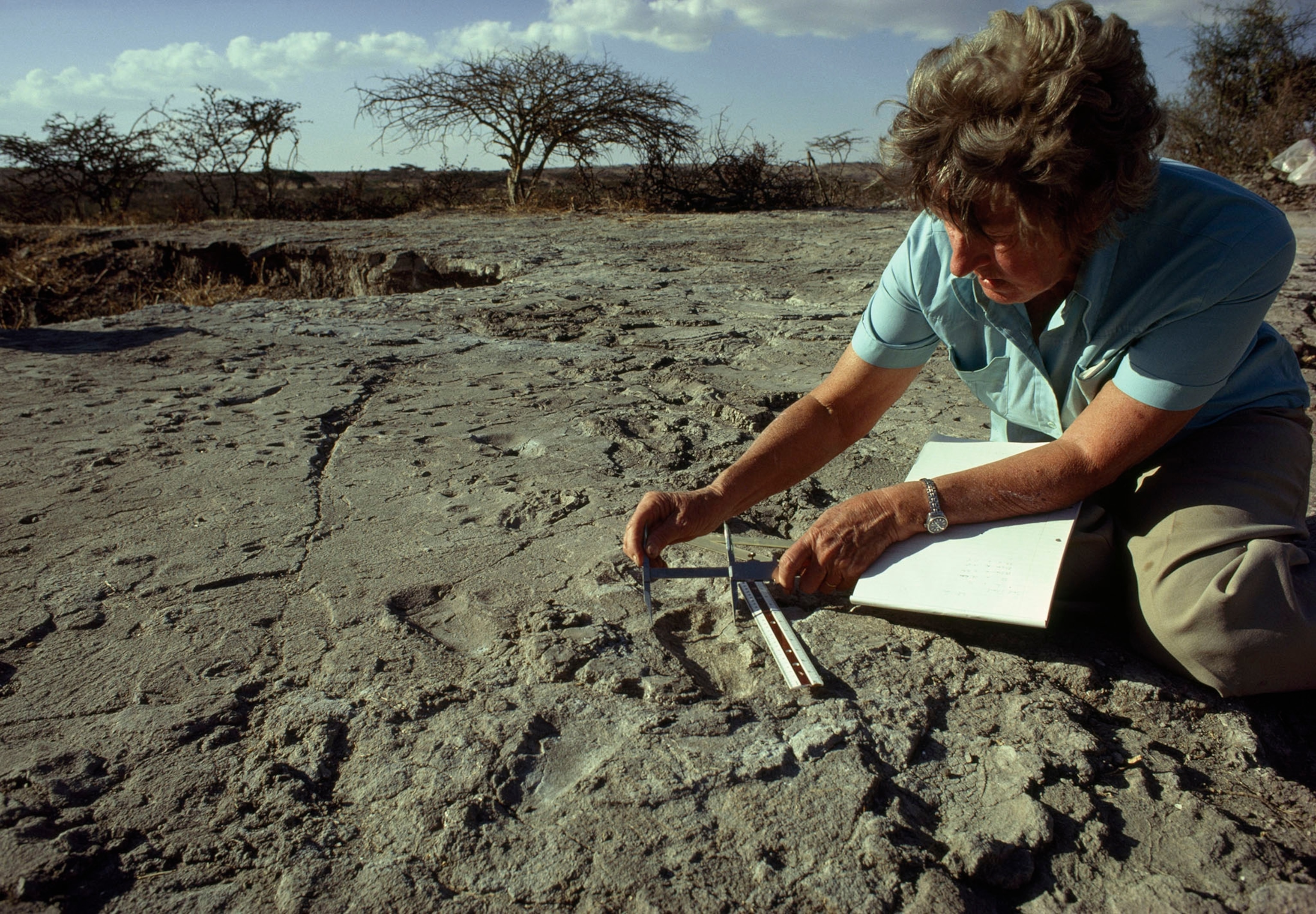
In addition, Harcourt-Smith notes that it’s impossible to say for sure that the two sets of tracks belong to the same social group.
Paleoanthropologist Owen Lovejoy of Kent State University, a member of the team that originally reconstructed Lucy’s anatomy, agrees.
“The size variation they report has no bearing on sexual dimorphism, since we don’t know the age of any of the footprint makers,” he writes in an email. “The suggestion that somehow these five prints suggest a gorilla-like sexual strategy is—well, let me put it this way—nuts,” he writes.
Still, Manzi and Cherin stand behind their interpretation, and they are already planning return trips to Laetoli to look for more prints.
“The footprints just published are simply what emerged from three small trenches,” writes Manzi. “There are certainly more tracks of this kind that are waiting for us to bring them to light.”
And future scientists will have ample opportunity to check the team’s claims. The researchers are working with the Tanzanian government to protect the prints, and they have already made 3-D digital models of them—ensuring that they will survive, at least virtually, for years to come.

